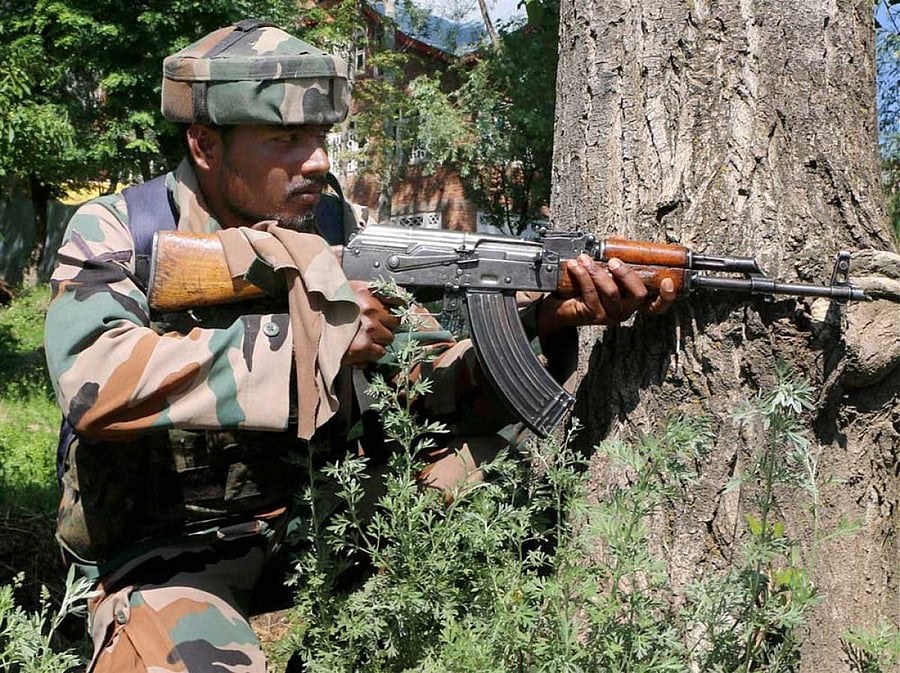Early this month, the Indian Army cut down its requirement of 8 lakh assault rifles to 2.5 lakh rifles and would re-prioritise its modernisation expenditures in view of the very limited funds allocated to it. In February this year, former vice chief of army staff Lt. Gen. Sarath Chand told the parliamentary standing committee on defence that the budgetary allocation for 2018-19 had “dashed hopes” of the army for any meaningful modernisation. Poor budgetary allocation has been the major problem for military modernisation over the last decade.
In October 2017, the army chief indicated the scrapping of a major modernisation programme, the Battlefield Management System (BMS), in favour of more pressing, routine requirements. That was an indication of how precarious the army’s position was on equipment and weapons. The vice chief’s statement to the standing committee was stark — 68% of army equipment is vintage, only 24% is of current technology, and 8% is fit to be displayed as museum pieces. So much for the army’s combat capability!
The air force and navy would fare no better. There is no doubt that when it comes to a crunch, the military will fight with whatever it has. It is also true that the government will rush to friendly countries to procure the required ammunition and equipment on a war footing in times of crisis, as it has in the past. But, is this the way to do things, particularly for a country that aspires to be a great power?
There are many who view defence as wasteful expenditure. This ‘guns versus butter’ argument is age-old, and nothing could be farther from the truth. Much of this stems from a more than 50-year legacy of treating defence as non-plan expenditure and, therefore, viewed as something that does not contribute to national development. Hence, defence planning and expenditure have lacked a long-term strategic orientation and conviction that it contributes to economic and technological strength as well as national development.
In the budget presentation for 2018-19, the finance minister allocated Rs 4,04,365 crore for defence, which is inclusive of defence pensions of Rs 1,08,853 crore. Effectively, this year’s budget estimate of Rs 2,95,511 crore is a marginal increase of 7.81% over last year. The capital expenditure allocation of Rs 99,563 crore is grossly inadequate for any meaningful modernisation effort. Hence, the exasperation of the army leadership.
Indian defence budgeting needs a transformation. This year’s budget is the lowest as a percentage of GDP, 1.58% of GDP, since the disastrous 1962 India-China War. The major problem lies in the area of capital expenditure allocation. This year’s allocation is barely 23% of the overall budget while revenue expenditure is a high 66%. Over the last 10 years, our capital outlay has reduced from about 38% to 23%. Over and above this issue, the committed liabilities have increased from 60% to 92%, thus leaving barely 8% of the budget for new procurements. Similarly, the shortfall in projected requirements has shot up from 11% in 2011 to 36% last year.
Fundamentally, India’s procurement policies are crisis-managed. That is, we delay our procurement till a crisis point. When we finally do make the decision to procure it, we do so at exorbitantly high costs, besides the penalty of operational costs and opportunities lost. Indigenous manufacture has rarely moved beyond the licence production model.
All this results in our capital outlay being spent largely on imports. Considering that the rupee has slipped from Rs 40 to a dollar in 2005 to Rs 70 today, the increase in capital outlay has not kept pace with rupee depreciation. This has had a cascading effect of postponing or delaying most procurements. The only way this can be addressed is a combined strategy of higher expenditure of not less than 3% of GDP on defence and a focused strategy of indigenisation over the next 20 years.
Flawed thinking
The idea that defence is a drain on the economy is a seriously flawed one. Military preparedness comes not just from equipment, personnel and training but more importantly from being seen from the perspective of defence economy, which is a critical part of the national economy.
The defence sector involves highly skilled manpower in the military, highly skilled workforce in the defence industry and can contribute significantly through research and development. All this will initially need high investments and consistency. Piecemeal budgeting creates negative consequences of stagnant industry and poor operational capability, besides high costs and economic inefficiency.
Defence expenditure, as a percentage of GDP, is more useful when comparing it with other expenditures of the government. Using it to compare with other countries or to say that India’s is the fifth largest defence budget in the world is meaningless. It is the actual amount spent towards meeting our requirement that matters more than the percentage of GDP. China’s defence budget for 2018 is 1.9% of its GDP, but we must remember that its economy is five times bigger than ours. China will spend $278 billion on its defence while India, with security commitments similar to China’s, will spend only $64 billion.
Is there scope for India’s defence budget needs to be more effectively addressed? In other words, can the finance minister find more funds for capital outlay? If we look at the break-up of the Union budget, we find that there are multiple social security schemes accounting for nearly 26% of the budget as opposed to 9% for defence. Most of these schemes result in less than 50% of allotted funds reaching the targeted sector due to corruption and inefficiency.
By bringing in ruthless accountability and efficiency, the FM should be able to find adequate resources for defence while still meeting the population’s social security objectives. India will need some hard thinking and effective planning to address its defence budget shortfall.
(The writer is a former Deputy Chief of Integrated Defence Staff in HQ IDS, MoD)
